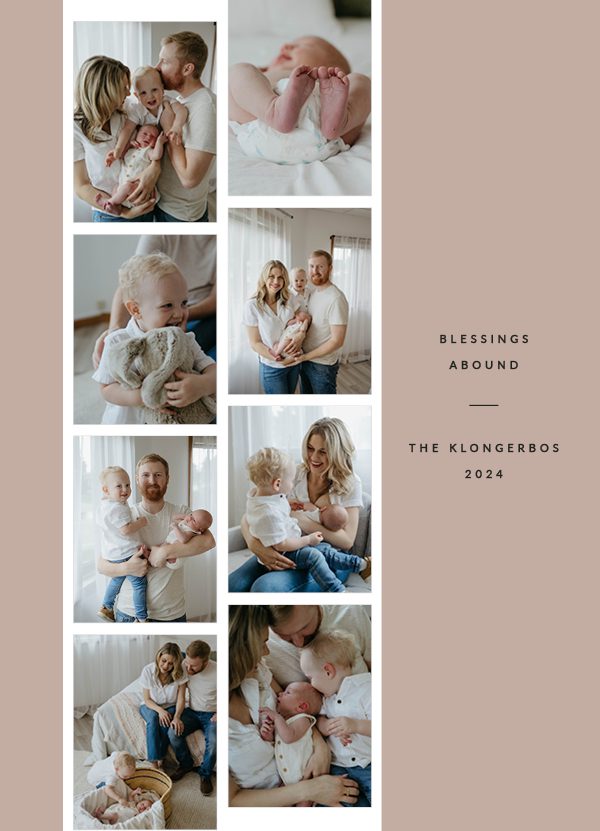
Why Your Business Needs a Brand Style Guide (+ How to Get One)
Does your business have a brand style guide?
(Do you even know what a brand style guide is?)
Basically, it’s a playbook for everything you create in your business, and all business owners should have one.
Here’s why — and how to create the best one for your brand strategy.
What Is a Brand Style Guide?
First, let’s back up: What is a brand?
We often think of a “brand” as a company’s logo and colors, but the true definition of branding goes so far beyond that. Your brand is your business’s personality — the unique traits that make you you.
Your brand is how the world recognizes you, what your clients think about you, the connotation that comes along with your business’s name. Your reputation, if you will.
So a brand guide is a tangible resource that encompasses all those little personality nuances. Sometimes called a “brand book” or “style guide,” a brand guide can include anything from your visual identity to your copywriting voice to your company values — all the different aspects that make up your brand.
The purpose of a brand guide is to ensure that no matter what content your business creates, everything you ship is consistent, cohesive, and, well, on brand.
Why You Need a Brand Style Guide
Think about your own personality for a second. Yes, you as a human.
Are you introverted? Extroverted? Funny? Serious? Impulsive? Methodical?
Now, think about someone who has the opposite personality. Someone whose ways you simply do not understand.
Got somebody in mind? Good.
Now, imagine how your family would react if you woke up tomorrow acting just like that person.
They’d probably look up at you from the breakfast table, spoons halfway to their mouths, and suggest you go straight back to bed.
In the same way, your clients or customers would think your business is crazy if you started showing up in a way that is completely off brand.
Consistency is what builds trust. When your brand appears inconsistent — in voice, in visuals, or in values — your clients subconsciously lose trust in your business.
If you run a creative business, you probably already care about branding. Perhaps you’ve even worked with a branding expert (such as a strategist, designer, or copywriter) before.
Even if you aren’t ready to invest in professional branding for your business yet, taking care of your brand is essential to not only your image, but also your sales.
In fact, a recent report by Marq found that brand consistency can increase revenue by 20% or more. Another new survey by Salsify found that 46% of U.S. consumers will pay more from a brand they trust — by far the most influential decision-making factor when comparing two similar products.
Even putting revenue aside, a brand style guide benefits your business in three key ways.
1. Help Your Clients Recognize + Trust You
Every business wants to appear professional… or at least like it has its sh*t together.
The best way to do that is with a strong brand identity.
Well-defined, high-quality branding helps your clients or customers easily identify (and therefore trust) your business across various platforms. The better your brand recognition, the more reliable you seem.
A unique brand also helps you stand out from the competition. Think about a business in your industry that has a stunning Instagram grid — the colors, fonts, and images all flow, and each caption is written with a similar style.
That brand consistency is what makes a striking first impression… and what keeps people coming back for more.
2. Get Your Team + Contractors on the Same Page
Do you have a team or work with contractors?
Even if you don’t now, you may someday — and when you do, you’ll be so glad you have a style guide that teaches them exactly how to represent your brand.
A thorough brand book ensures that all your designers, copywriters, and other content creators are working with the same building blocks. It gives them a clear framework to use as a starting point for their work.
That brand consistency report by Marq found that 85% of organizations have brand guidelines… but only 30% say they’re enforced. What a missed opportunity!
There’s a reason the most recognizable brands in the world — like Apple, Nike, and McDonald’s — develop and enforce strict brand guidelines: They know how important those guidelines are to not only their reputation, but also their sales. They can’t afford to misstep.
Curious what some of these brand style guides actually look like? Here are a few examples of famous brand guides I like:
- Starbucks brand guide
- Audi brand guide
- Urban Outfitters brand guide
- Mailchimp visual style guide + content style guide
- Salesforce brand guide
3. Create Content with Confidence
Consider your brand style guide like a cheat sheet for the future. You can reference it any time you go to create new content, ensuring what you ultimately publish will “pass the test.”
Comprehensive brand guides are especially helpful for business owners or creative professionals whose natural strength is not copy or design. Maybe you know your visual branding like the back of your hand, but you struggle to write copy that gels with your brand voice. Or maybe you find copywriting a cinch, but you can never remember which colors or fonts to use when designing a graphic.
By continually checking your brand style guide as you create content, you’ll ensure all your sales and marketing initiatives are cohesive, consistent, and relevant to your overall business goals.
How to Create a Brand Style Guide
Okay, you’re convinced you need a brand style guide… Now, how do you actually get one?
First of all, you need to decide whether you want to create it yourself or hire a professional to create it for you.
I recommend outsourcing your brand guide to a designer or copywriter, as they can help you not only refine your branding from a strategic perspective but also package it in a beautiful, organized way.
(Pssst: I offer brand strategy guides à la carte or as part of my Brand & Website Copy package over at Quotable Copy. Learn more here.)
However, you can definitely DIY the process, especially if your business is new. There’s nothing wrong with starting with a brand guide template on Canva — something is better than nothing!
Just make sure your decision is based on your business needs and long-term goals, not merely your current preference. It might be fun to play around with colors and fonts you like, but will your ideal client actually connect with that visual identity? If you feel clueless about your brand voice, would it be wise to hire a copywriter who can help you hone your messaging strategy?
Personally, I’ve gotten by with a DIY brand for a while, but I’ve finally invested in a rebrand with a professional design studio (see it here!). Just the style guide alone has already helped elevate my brand and business to a completely new level.
Would a similar investment be wise for your business?
Whichever method you decide, when it comes to actually creating the guide, there are three main steps.
1. Outline the Brand Guide
The beauty of brand guides is that there’s no “one size fits all” approach.
As a copywriter with a decade of experience working at digital marketing agencies, I have seen dozens and dozens of brand guides for clients (and even created a handful of my own) — and I can tell you that each one looks completely different. It’s so fun to see how different businesses choose to represent their brands.
While there are many different elements you can include in your brand guide — and I recommend as many as possible, for the most thorough understanding of your brand — here are the three main categories.
- Brand Strategy
- Positioning in market
- Mission statement
- Company vision
- Core values
- Target audience
- Messaging
- Name + tagline(s)
- Voice
- Tone
- Personality
- Taglines
- Dictionary
- Dos + don’ts
- Visual Identity
- Mood board
- Logo + any derivatives
- File formats
- Photography
- Other elements (e.g., patterns, illustrations, graphics, icons)
- Color palette / pairings
- Font hierarchy
- Collateral (e.g., business cards, Instagram templates)
2. Create the Brand Guide
Once you’ve outlined the elements you want to include in your brand guide, it’s time to actually create it!
If you’ve chosen to hire a contractor, this part should be easy. You may be asked to provide some input, but overall, your designer or copywriter can handle the entire creation process. (Because you’re trusting them with your entire guide, it’s important to hire someone who communicates well and understands your vision.)
If you’ve chosen to DIY… well, this part is up to you. Canva is a great beginner-friendly design tool. You probably won’t wow anyone with what you create in Canva, but at least you’ll be able to make your brand guide fairly easily. A professional design tool like InDesign is better, if you already have access to and know how to use it. The price and learning curve are both steep, so I would not recommend InDesign to non-designers.
While you should certainly be thoughtful and strategic in creating your brand guide, there’s no need to spend months on it. The point is simply to have a one-stop shop for all your branding needs.
You can always revisit it later…
3. Review as Needed
After it’s finished, don’t let your brand guide collect dust in a Google Drive folder. Let it live and breathe!
Review your brand style guide at least once a year. Does everything still align with your business goals? If not, update the guide accordingly. (But try not to edit it too frequently, or your branding will start to get muddy.)
Even if you have no updates to make, reviewing your style guide frequently will help you — and your team, if you have one — remember how to represent your business well. It will also reinforce what makes your business unique, which helps your sales and marketing efforts.
If your brand guide is new or recently refreshed, you may even want to share about it with your audience. Those famous brand guides linked above are all public, but you could even publish just a piece of yours, or simply announce the news of its creation in general.
Sharing about your brand guide not only holds you accountable to adhering to it, but also shows your clients that you really do care about your brand — which means you’re more likely to care about theirs.
That increases trust… which also increases sales!
Want More Info on Brand Style Guides?
If you’re excited to learn more about brand style guides — or you’re just an auditory learner — listen to my interview on the Take It Personally podcast, where I chat with brand photographer and educator Maddie Peschong all about “Why You Need a Brand Guide.”
And if you’re interested in how a brand strategist can help you create or implement a brand style guide for your business, please reach out to me!
I have a decade of experience writing personality-packed, conversion-driven copy for businesses, and I would love to help you refine your brand messaging and overall marketing strategy.
In fact, I have a signature service that includes a comprehensive brand messaging guide along with custom website copy and a website success kit, which is perfect for new (or rebranding) businesses that want to stand out and sell more online. Learn more about The Brand + Website Copy Bundle here!



Comments Off on Why Your Business Needs a Brand Style Guide (+ How to Get One)